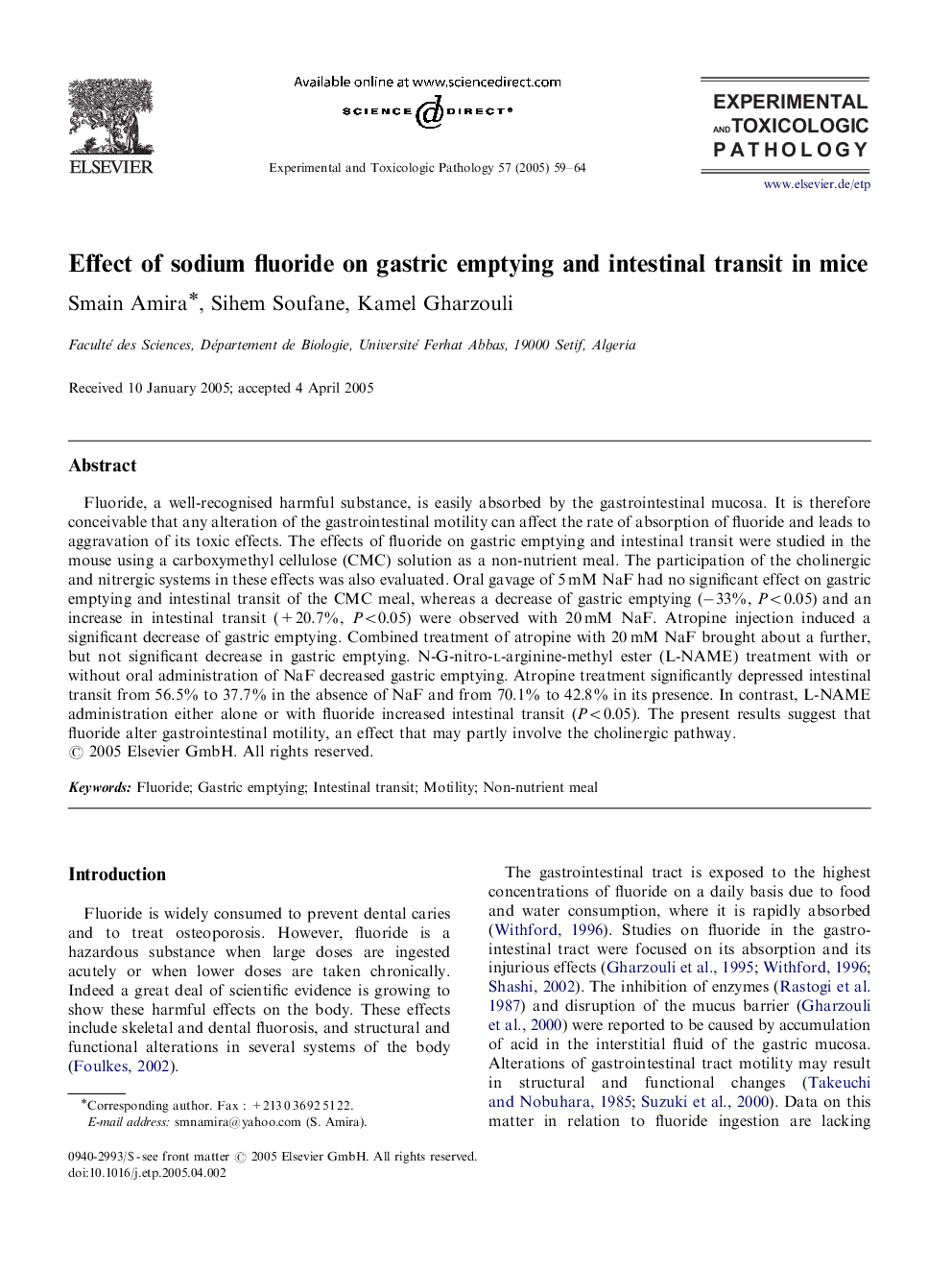| Article ID | Journal | Published Year | Pages | File Type |
|---|---|---|---|---|
| 9000334 | Experimental and Toxicologic Pathology | 2005 | 6 Pages |
Abstract
Fluoride, a well-recognised harmful substance, is easily absorbed by the gastrointestinal mucosa. It is therefore conceivable that any alteration of the gastrointestinal motility can affect the rate of absorption of fluoride and leads to aggravation of its toxic effects. The effects of fluoride on gastric emptying and intestinal transit were studied in the mouse using a carboxymethyl cellulose (CMC) solution as a non-nutrient meal. The participation of the cholinergic and nitrergic systems in these effects was also evaluated. Oral gavage of 5Â mM NaF had no significant effect on gastric emptying and intestinal transit of the CMC meal, whereas a decrease of gastric emptying (â33%, P<0.05) and an increase in intestinal transit (+20.7%, P<0.05) were observed with 20Â mM NaF. Atropine injection induced a significant decrease of gastric emptying. Combined treatment of atropine with 20Â mM NaF brought about a further, but not significant decrease in gastric emptying. N-G-nitro-l-arginine-methyl ester (L-NAME) treatment with or without oral administration of NaF decreased gastric emptying. Atropine treatment significantly depressed intestinal transit from 56.5% to 37.7% in the absence of NaF and from 70.1% to 42.8% in its presence. In contrast, L-NAME administration either alone or with fluoride increased intestinal transit (P<0.05). The present results suggest that fluoride alter gastrointestinal motility, an effect that may partly involve the cholinergic pathway.
Related Topics
Life Sciences
Agricultural and Biological Sciences
Animal Science and Zoology
Authors
Smain Amira, Sihem Soufane, Kamel Gharzouli,
